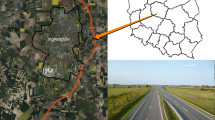Summary
Explanations of delayed plumage maturation (DPM) in passerines have focused on potential breeding season advantages for non-definitive (subadult) plumage. In contrast, the molt constraint hypothesis (Rohwer and Butcher 1988) proposes that subadult plumage is a winter adaptation, increasing winter survivorship by decreasing intraspecific aggression (the winter status signaling hypothesis) or predation (the winter crypsis hypothesis). Under the molt constraint hypothesis, nondefinitive breeding plumage is non-adaptive, resulting from species-specific constraints on the number of feathers replaced during the pre-alternate (spring) molt. In studies conducted on an overwintering population of orchard orioles in Panama, I tested predictions of both the winter status signaling and molt constraint hypotheses. Contrary to predictions of winter status signaling, I found no evidence that subadult plumage reduces adult male aggression toward subadults. Agonistic encounters occurred at random with respect to plumage and the intensity of adult male/subadult male encounters was not lower than the intensity of encounters occurring within age classes. Contrary to the molt constraint hypothesis, I found no evidence that the number of feathers exchanged by subadults in their pre-alternate molt is the sole constraint on the development of subadult breeding plumage. The majority of feathers grown by molting subadult orioles during January and February were of non-definitive coloration. These results, together with results of earlier breeding season experiments which tested summer communication hypotheses for DPM in this species, suggest that subadult plumage in the orchard oriole may be non-adaptive and the result of constraints on plumage development. They also indicate, however, that the extent of the pre-alternate molt is not the sole source of that constraint.
Similar content being viewed by others
References
Bent AC (1958) Life histories of North American blackbirds, orioles, tanagers, and allies. Smithsonian Institution Bulletin 211, Washington DC
Breitwisch R, Diaz M, Lee R (1987) Foraging effiencies and techniques of juvenile and adult northern mockingsbirds (Mimus polyglottos). Behavior 101:225–235
Brown MB, Brown CR (1988) Access to winter food resources by bright versus dull-colored house finches. Condor 90:731–734
Ekman J, Cederholm G, Askerno C (1981) Spacing and survival in winter groups of willow tit (Parus montanus) and crested tit (P. cristatus): a removal study. Ornis Scand 10:55–68
Enstrom DA (1990) Investigations of delayed plumage maturation in the orchard oriole. Ph.D. thesis, University of Illinois, Urbana-Champaign, IL
Enstrom DA (1992) Delayed plumage maturation in orchard orioles (Icterus spurius): Tests of communication hypotheses. Anim Behav (in press)
Dennis JV (1948) Observations on the orchard oriole. Bird-Banding 19:12–21
Dwight J Jr (1900) The sequence of plumages and moults of the passerine birds of New York. Ann NY Acad Sci 13:73–360
Flood N (1984) The adaptive significance of delayed plumage maturation in male northern orioles. Evolution 32:267–279
Foster MS (1987) Delayed maturation, neoteny, and social system differences in two manakins of the genus Chiroxiphia. Evolution 41:547–558
Fretwell S (1969) Dominance behavior and winter habitat distribution in juncos (Junco hyemalis). Bird-Banding 40:1–83
Fugle GN, Rothstein SI, Osenberg CW, McGinley MA (1984) Signals of status in wintering white crowned sparrows (Zonotricia leucophrys gambelii). Anim Behav 32:86–93
Gauthreaux SA Jr (1978) The ecological significance of behavioral dominance. Perspect Ethol 3:17–54
Greenwood H (1985) Sexual selection and delayed plumage maturation in sub-adult male cohort of the red-winged blackbird. Ph.D. thesis, Macdonald College of McGill University, Ste. Anne de Bellevue, Quebec
Hill GE (1989) Late spring arrival and dull nuptial plumage: Aggression avoidance by yearling males? Anim Behav 37:665–673
Jackson WM, Rohwer S, Winnegrad RL (1988) Status signaling is absent within age and sex classes of Harris' sparrows. Auk 105:424–427
Jarvi T, Bakken M (1984) The function of the variation in the breast stripe of the great tit (Parus major). Anim Behav 32: 590–596
Lyon BE, Montgomerie RD (1986) Delayed plumage maturation in passerine birds: Reliable signaling by subordinate males? Evolution 40:605–615
Morton ES (1979) Effective pollination of Erythrina fusca by the orchard oriole (Icterus spurius): Coevolved behavioral manipulation? Ann Miss Bet Gard 66:482–489
Peterson RT (1980) A field guide to the birds. Houghton Miffin, Boston
Procter-Gray E, Holmes RT (1981) The adaptive significance of delayed attainment of plumage in male american redstarts: a test of two hypotheses. Evolution 35:742–751
Pyle P, Howell SNG, Yunick RP, DeSante DF (1987) Identification guide to North American passerines. Slate Creek Press, Bolinas, CA
Rohwer S (1975) The social significance of avian plumage variability. Evolution 29:593–610
Rohwer S (1978) Passerine subadult plumages and the deceptive acquisition of resources: A test of a critical assumption. Condor 80:173–179
Rohwer S (1986) A previously unknown plumage of first-year indigo buntings and theories of delayed plumage maturation. Auk 103:281–292
Rohwer S, Butcher GS (1988) Winter versus summer explanations of delayed plumage maturation in temperate passerine birds. Am Nat 131:556–572
Rohwer S, Manning J (1990) Differences in timing and number of molts for baltimore and bullock's orioles: Implications to hybrid fitness and theories of delayed plumage maturation. Condor 92:125–140
Rohwer S, Fretwell SD, Niles DM (1980) Delayed Maturation in Passerine Plumages and the Deceptive Acquisition of Resources. Am Nat 115:400–437
Rohwer S, Klein WP Jr, Heard S (1983) Delayed plumage maturation and the presumed prealternate molt in american redstarts. Wilson Bull 95:199–208
Stutchbury B (1991) The adaptive significance of male subadult plumage in purple martins: plumage dying experiments. Behav Ecol Sociobiol 29:297–306
Slagsvold T, Lifjeld JT (1988) Plumage colour and sexual selection in the pied flycatcher (Fecedula hypoluca). Anim Behav 36:395–407
Watt DJ (1986) Relationship of plumage variability, size and sex to social dominance in Harris' sparrows. Anim Behav 34:16–27
Wetmore A, Pasquier RF, Olson SL (1984) The Birds of the Republic of Panama. Smithsonian Institution Press, Washington
Zar JH (1974) Biostatistical Analysis. Prentice-Hall, Englewood Cliffs, NJ
Author information
Authors and Affiliations
Rights and permissions
About this article
Cite this article
Enstrom, D.A. Delayed plumage maturation in the orchard oriole (Icterus spurius): tests of winter adaptation hypotheses. Behav Ecol Sociobiol 30, 35–42 (1992). https://doi.org/10.1007/BF00168592
Received:
Accepted:
Issue Date:
DOI: https://doi.org/10.1007/BF00168592




